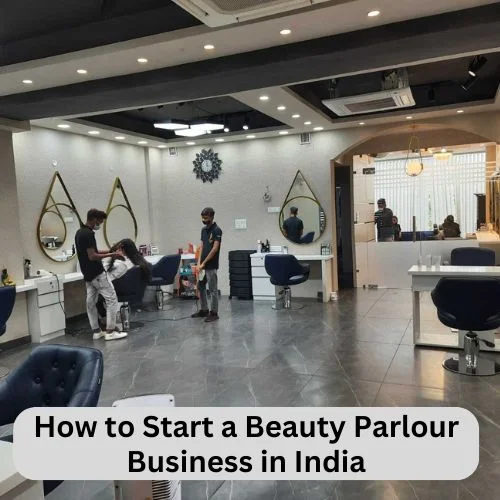Brand loyalty has become the Holy Grail of success in business in today’s fiercely competitive market scenario. It is no longer about closing a sale; rather, it is about building some relationship with your customer who keeps returning for more. The customers can be termed loyal if they not only do repeated business but act as ambassadors of the company to promote it among others. However, brand loyalty cannot be solely achieved by good quality products or services but by infusing trust, adding value with every interaction, and resonating with their inner needs.
This article will reflect on ways of creating brand-loyal customers using real-life examples to underpin successful strategies.
Table of Contents
| Sl No | List of Brand Loyalties |
| 1 | Exceptional Customer Service |
| 2 | Deliver Consistent Quality |
| 3 | Engage with Your Customers |
| 4 | Reward Loyalty |
| 5 | Be Transparent and Build Trust |
| 6 | Create Emotional Connections |
| 7 | Innovate But Be Loyal to Your Brand |
1. Exceptional Customer Service
The most significant way to develop customer loyalty involves customer service. Today’s customers are not satisfied with just a product; they need an experience. Good customer service makes customers feel valued, while bad customer service will run them off even if a company’s product is superior.
Example: Zappos
Zappos is an online shoe and apparel retailer with near-mythical status in the pantheon of customer service. To Zappos, the “wow” philosophy means exceeding customer expectation. At Zappos, employees do not need prior approval from superiors to handle a problem, nor are customer service calls controlled by strict times. Such independence enables them to build real relations with their customers. In one viral incident, a representative of Zappos spent more than 10 hours on a single call, addressing various issues faced by the customer. Indeed, Zappos has given so much priority to customer satisfaction that an uncommonly loyal customer base has been generated for the company. At the same time, a remarkable quantum of sales comes from repeat customers.
How to Apply It:
- Train your customer service to own the solutions to the issues a customer may face creatively.
- Be reachable on as many platforms as possible: via email, phone, social media, and live chat.
- Make sure responses are timely.
- Always follow up on unresolved issues simply to show customers you care about their satisfaction.
Source: https://centrisinfo.com/how-zappos-inspired-a-new-way-to-work/
2. Deliver Consistent Quality
Consistency is an even better driver of brand loyalty. Knowing that they will be able to get that same quality every time, no matter what creates a sense of dependability in customers that will make them want to be with you for years to come. Inconsistencies in product quality, service level, or communication are only going to serve to break down trust and send your customers away towards your competitors.
Example: Coca-Cola
Coca-Cola is surely one of the most recognisable brands in the world. Whether you purchase a Coke in the U.S., Europe, or even Asia, you get the same old classic taste you are so used to. Over the years, Coca-Cola has retained the quality and taste of its products, something customers could rely on. This consistency has been fundamental in building up and holding onto one of the most loyal customer bases in the world.
How to Apply It:
- Invest in quality control to ensure every product or service is exemplary.
- Be consistent: your brand’s messaging and tone need to be consistent across social media, your website, and email.
- If something does change, be transparent. Explain why-for instance, changes in a formula of a product, or in pricing- let your customers know about it.
Source:https://www.thedrum.com/news/2019/05/23/coca-cola-ads-8-its-most-memorable-campaigns
3. Engage with Your Customers
In the digital age, brand loyalty is often cultivated through consistent and meaningful engagement. The customer wants to be told that this is your brand’s story, where he or she plays their part, just a transaction. Community building around your brand can help create these all-important emotional connections for loyalty.
Example: Glossier
Beauty brand Glossier knows how to engage its customers. The brand earned its following by being a highly customer-centric, participatory company in developing its products. Often, Glossier reaches out for feedback over social media and integrates such feedback directly into new product lines. By characterising the brand as created “with the people,” Glossier has forged a loyal fanbase that buys its products and supports the brand online.
How to Apply It:
- Use social media for direct engagement: ask for feedback, re-share user-generated content, and converse.
- Create opportunities for customers to give input into product development or brand initiatives. This could be through things like surveys, polls, and focus groups.
- Create a community where your customers can interact with each other. It could be on a forum, a group on social media, or even a selected email list.
Source: https://www.businessoffashion.com/articles/beauty/glossier-australia-expansion/
4. Reward Loyalty
Customers who feel special are likely to be extremely loyal to a brand. Loyalty programs, along with other rewards for repeat customers, have been proven repeatedly to build long-lasting relationships. These programs prove to customers that their patronage is well-valued and that they are getting something extra with their loyalty.
Example: Starbucks Rewards Program
Starbucks runs the most successful customer loyalty programs in the world. Customers credit “stars” with every purchase when using the Starbucks Rewards app. These stars are then taken and turned into free beverages or food. This app also provides personalised offers, including birthday rewards and discounts based on purchase history. This program incentivises repeat visits and gives Starbucks a means of reaching its customer base on a more personal level, while also gathering important data on customer preferences.
How to Apply It:
Devise a multi-tiered loyalty program where the benefits increase upon customers’ return for more purchases. Some examples of the benefits include only discounts or early access to new offerings. Give personalised rewards that match certain behaviors. You can reward your high-spending customers with extra privileges, for instance. Make sure that navigating your loyalty program is simple and clearly communicate the value that customers will get from participating in it.
Source: https://medium.com/zinrelo/loyalty-rewards-case-study-new-starbucks-rewards-program-33a037a8d5f1
5. Be Transparent and Build Trust
Trust is a cornerstone of brand loyalty. Reasons must be given to customers to believe that your brand can be trusted to always act honestly, reliably, and with integrity. Whether through transparency on supply chains, price fairness, or owning up to wrongdoings, being forthright with customers creates trust and builds loyalty.
Real-Life Example: Patagonia
Outdoor clothing brand Patagonia is one of those brands that inspire environmental activism through their business and manufacturing process. Patagonia isn’t simply advertising its commitment to sustainability; it’s placing the principle into every part of its business. It has pledged 1% of sales to environmental causes, ensures fair labour practices, and even encourages customers to buy used products rather than new ones to reduce waste. This level of transparency and commitment to a higher purpose has helped turn Patagonia into a brand dear to many, with a fiercely loyal customer base who can share the company’s values.
How to Apply It:
Be transparent about product origin, how they’re made, and how your business operates.
Admit mistakes quickly and communicate what you’re doing to fix them. Customers respect brands that own up to their shortcomings. Position your brand for a cause or mission that resonates with your audience and do so authentically.
6. Create Emotional Connections –
Brand loyalty tends to flow from emotional bonds between the customer and brand. The most intense loyalty can often be seen in brands that successfully manage to touch the customers’ emotions, values, or aspirations. In this way, when a brand connects on a personal level, customers feel part of something greater than themselves.
Example: Nike
Nike knows how to provoke emotions; the brand is using storytelling with the purpose of resonating deep inside its audience. Neither the Nike slogan “Just Do It” nor its ad campaigns sell shoes-they encourage people to break through obstacles, make an effort, and grab what they want. Nike grew in customers’ love by advertising power and determination, thus making these customers loyal to an idea, not to the product.
How to Apply It:
- Use storytelling to point toward something greater than your brand. Show how your products or services help customers realize their goals or align with their values.
- Appeal to your audience’s emotional focus on that which is important to them-be it sustainability, community, or self-expression.
- Communicate core values of your brand-always-and ensure that they echo in every piece of content, product, or service you put forward.
7. Innovate But Be Loyal to Your Brand
Innovation can help drive relevance and excitement, but it is essential to balance innovation with consistency. While customers love new and improved products, they also enjoy familiarity. If a brand strays too far from what initially made the brand successful, alienating some customers may occur.
Example: Apple
Apple is a company that really evolved its strategic innovation while retaining core values on brand loyalty. Products like the iPhone, iPad, and Apple Watch are continuations of innovation from Apple, but its core focus in every product design is simplicity and the end-user experience. Customers have become conditioned to know that Apple products will be innovative, but they can still trust that the brand is relentless about ease of use and elegant design.
How to Apply It:
- Introduce new products or features regularly to keep things fresh with your brand, but core values and messaging should always remain the same.
- Innovate, but consider the voice of the customer. Ask yourself: Will this improve their experience, or will it cause confusion?
- Innovate, but don’t sacrifice reliability. While innovation is key, beware not to lose what your customer has grown to love about your brand.
Source: https://commons.wikimedia.org/wiki/File:Apple_logo_black.svg
Conclusion
Brand loyalty is not a shortcut but an investment in a long-term relationship with your customer. You build deep and meaningful relationships with your customers through great customer service, consistently delivered quality, engaging an audience, rewarding loyalty and transparency, making emotional connections, and innovating purposefully.
Real-life examples in Zappos, Glossier, and Nike show this to be very true: it’s a brand that puts its customers first, truly understands their needs, and fosters the greatest amount of brand loyalty. It’s more than selling a product; it’s an experienced community, a brand-they want to keep coming back to.
Loyalty distinguishes the great brands from all the rest in a world where customers’ choices are unlimited. Invest a little time in your customers, and they’ll invest in you.















